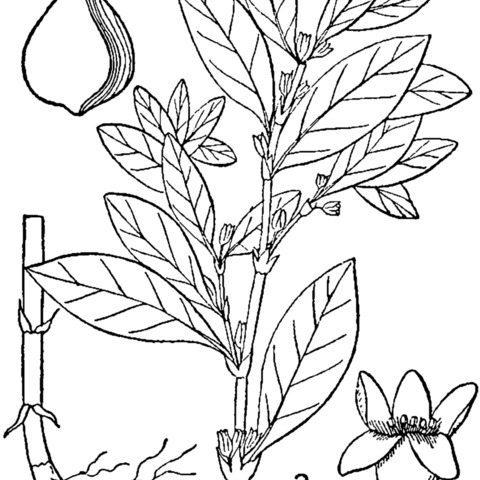Plants light green or yellowish, heterophyllous. Stems erect to ascending, sparingly branched in distal 2, not wiry, 15-75 cm. Leaves: ocrea 7-12 mm, proximal part cylindric, distal part usually persistent, with strong veins, margins entire or lacerate, silvery, later disintegrating into ± persistent brown fibers; petiole 1-5 mm; blade light green or yellowish, elliptic to obovate, 30-60(-80) × (8-)10-25 mm, margins flat, apex obtuse; stem leaves 1.5-3.5(-4) times longer than branch leaves; distal leaves overtopping flowers in distal part of inflorescence. Inflorescences axillary; cymes in axils of most leaves and toward tips of stems and branchs, 1-5-flowered. Pedicels mostly exserted from ocreae, 3-7 mm. Flowers closed; perianth 2.8-3.8(-4.2) mm; tube 20-37% of perianth length; tepals overlapping, green with yellowish, rarely whitish green, margins, sepaloid, not keeled, oblong to obovate, cucullate; midveins branched, moderately to heavily thickened; stamens 7-8. Achenes enclosed in perianth, brown to tan, ovate, 3-gonous, 2.3-3.5 mm, faces subequal, ± concave, apex not beaked, edges concave, dull, striate-tubercled; late-season achenes uncommon, 4-5 mm.
More
Much like no. 3 [Polygonum achoreum S. F. Blake], but somewhat heterophyllous (more so in age), with green or bright yellow-green lvs, the larger ones mostly 25–60 × 10–30 mm; ocreae hyaline-silvery, entire to slightly lacerate; perianth cleft ca 3/4 its length; achenes light to dark brown, striate-papillose. A weed in waste places, widespread (but not common) in the U.S. and s. Can.

